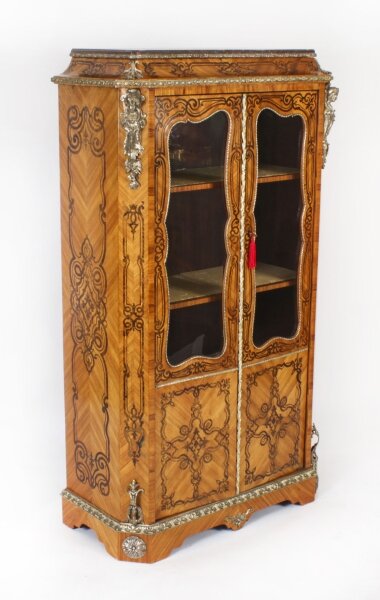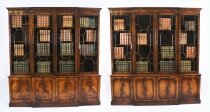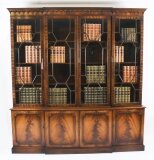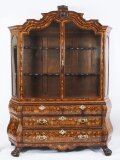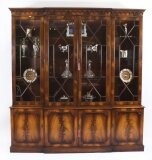Rouge de Rance
is a red marble from the town of Rance in the province of Hainaut Belgium.
The red "marble" of Rance was very popular as a prestigious building material for decorative use. Although it has been exploited since Roman Antiquity it became most renowned since the 17th century because of its prolific use in the Royal Chateau of Versailles built for the French king Louis XIV. Large quantities were used for the most prestigious parts of the building, including the interior wall decoration of the "Galerie des Glaces" and the columns of the main portico on the "Cour des Marbres". To satisfy the vast demand needed for Versailles and other French royal residences a new quarry was opened and subsequently named "Trou de Versailles"
Since the 18th century "Rouge de Rance" was also very popular as a material for fireplaces and clocks, and as a top for furniture such as commodes.
The exploitation of the quarries in Rance stopped in the 1950s. A museum on Belgian Marbles was opened in Rance in 1979.
King wood
is a classic furniture wood, almost exclusively used for inlays on very fine furniture. Occasionally it is used in the solid for small items and turned work, including parts of billiard cues, e.g., those made by John Parris. It is brownish-purple with many fine darker stripes and occasional irregular swirls. Occasionally it contains pale streaks of a similar colour to sapwood.
The wood is very dense and hard and can be brought to a spectacular finish. it turns well but due to its density and hardness can be difficult to work with hand tools. It also has a tendency to blunt the tools due to its abrasive properties.
Gonçalo Alves is a hardwood (from the Portuguese name, Gonçalo Alves). It is sometimes referred to as tigerwood — a name that underscore the wood’s often dramatic, contrasting color scheme.
While the sapwood is very light in color, the heartwood is a sombre brown, with dark streaks that give it a unique look. The wood’s color deepens with exposure and age and even the plainer-looking wood has a natural luster.
Two species are usually listed as sources for gonçalo alves: Astronium fraxinifolium and Astronium graveolens, although other species in the genus may yield similar wood; the amount of striping that is present may vary.
In the high tropical forests of Central and South America, well-drained soils furnish nutrients for a variety of dense, durable hardwoods sought for maritime use, heavyconstruction, and furniture. The Spanish began harvesting in Latin American forests in the early 1500s to provide timber for boatbuilding and repair. By the early 1900s, however, steel ships had replaced wooden ones, and the interest in tropical forests by both Europeans and Americans shifted to appearance-grade woods for furniture.
Although history fails to provide us with a shopping list of species from either harvest period, it's probable that the wood we know today as goncalo alves has always been sought. That's because goncalo alves, considered one of the most beautiful of tropical woods, has a tough reputation, too. Strong and durable, it's used for construction in its homeland and secondarily for fine furniture. Woodworkers elsewhere treasure the wood for decorative items and veneer accents.


